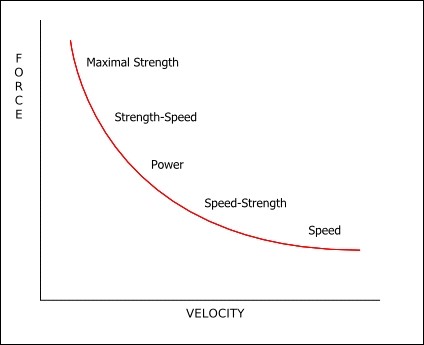We’ve been fortunate enough to have many new members join us recently, so I wanted to take some time to explain the WHY behind our strength work. It never hurts for our longer term members to get a refresher either. First, we’ll cover why we perform strength work in general, and then we’ll go into why we follow the specific format that we do.
We’ve written previously about how strength is king. In that post, we cover how strength influences each of the 10 general physical skills that CrossFit trains (accuracy, agility, balance, coordination, cardio/respiratory endurance, flexibility/mobility, muscular stamina, muscular strength, power, and speed). From a more general standpoint, we care about strength work for 4 reasons:
- As we age, maintaining muscle mass is hugely beneficial for health reasons. It keeps us more resilient, which means less prone to injury. It keeps us independent, so that we don’t lose autonomous functions (e.g., being unable to get up if we fall).
- If we perform everything “for time,” we don’t have dedicated time to focus on skill development. By having a designated portion of our classes set aside to practice our lifts, we can build our motor patterns in a more controlled environment. Then, when we do perform these movements quickly in a metcon setting, we’ll be more efficient.
- The two ways that we scale workouts are in volume and load. In other words, we do fewer repetitions, or move less weight. By focusing on getting stronger, we improve our ability to handle more work, and we can move heavier weights. Improving our strength is the fastest way to get to the point where we can handle traditional CrossFit benchmark workouts at an Rx level.
- It’s a quick and very visual way to measure progress. Our members pay us to help them get results. Unless we frequently repeat workouts, which is boring for most people, and what many people CrossFit to avoid, how do we know that we’re improving? If we can lift more weight, or the same weight for more repetitions, we know that we’ve improved. The star that Wodify gives you if you PR is a great visual aid for this as well.
For all these reasons, we perform some kind of strength work, whether it’s with a barbell, DBs, or gymnastics based, roughly 80% of the time in our CrossFit classes. When it comes to the format for strength training, there are several different approaches. In the past, we’ve incorporated Jim Wendler’s 5/3/1 program. What we currently use is my own spin on Brandon Lilley’s Cube Method. Both methods have their roots in the Westside Method, popularized by Louie Simmons.
A quick outline of the Westside Method – in a given week, an athlete has a max effort lower body day, a max effort upper body day, a dynamic lower, and dynamic upper. There are also 2 days dedicated to special assistance exercises and general physical preparedness. The bulk of the athletes’ training is made up of accessory exercises. It’s a highly effective program for athletes who can maintain a regular training schedule. One of the drawbacks, however, is that athletes don’t spend a lot of time learning to handle higher volume of repetitions in the 80-90% range of their lifts. Once they get to 85+%, they mostly perform singles. In CrossFit, we need to be able to rep that out.

The Cube method performs a nice compromise. We still perform the dynamic work (these are our speed days where you’ll see EMOM style lifting at lighter weights). Instead of performing max effort days, which we save for testing, we have heavy days, where we perform repetitions at 85-95% of our maxes. This allows us to still build top end strength, while being a little less taxing on our nerves. Considering that high intensity metcons are also stressful on the nerves, this is a good thing. And, since CrossFit is a strength AND conditioning program, we can’t dedicate every class purely to strength training. So, we can’t complement max effort days with a secondary lift for higher repetitions in the 75-85% range. The Cube method therefore has volume days, where we perform sets of 6-8 in the moderately heavy range.
Superimposing this method on our daily rotation of lifts also gives us greater flexibility to accommodate members who do not have a super rigid training schedule, as well as those who do. Whether you train religiously on M-W-F, or have a more haphazard schedule, you’ll still get in the work you need to be better.
Why bother with these different types of strength training – speed, volume, and heavy? There are different kinds of strength, and to be well rounded, we need to develop all of them. But I’ve droned on long enough, and I covered that topic here. In any case, strength work gives us the most bang for our buck and is hugely important not just in the CrossFit world, but for general health and wellness. Thanks for reading and see you in the gym.
